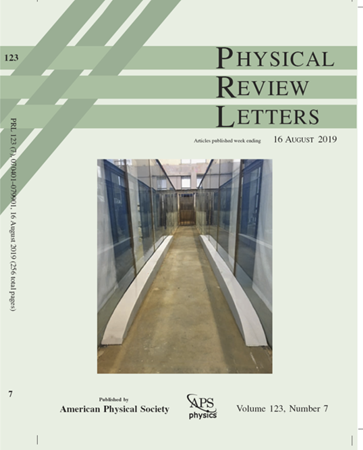M82辐射衰变粒子的核星界
IF 8.1
1区 物理与天体物理
Q1 PHYSICS, MULTIDISCIPLINARY
引用次数: 0
摘要
轴子和其他假定的质量在几十到几百k / s之间的弱相互作用粒子可以在洛伦兹增强因子Ea/ma > 10的恒星核心中产生。因此,像M82这样的星暴星系是慢轴子的高效工厂。它们的衰变a→γγ会产生大量的x射线光子,峰值约为100 keV,并以一个相对较大的角度在银河系周围传播。我们利用核光谱望远镜阵列任务的观测结果表明,这些特征的缺失可以将30-500 keV的轴子质量限制在gaγ ~ 10−10−12 GeV−1的轴子-光子耦合的未知区域。我们的论点可以应用于其他重的弱相互作用粒子和天体物理源,这些源足够热,可以产生它们,但足够冷,可以避免大的助推因子,从而减缓衰变。2025年由美国物理学会出版本文章由计算机程序翻译,如有差异,请以英文原文为准。
NuSTAR Bounds on Radiatively Decaying Particles from M82
Axions and other putative feebly interacting particles with a mass of tens to several hundreds of keVs can be produced in stellar cores with a Lorentz boost factor Ea/ma≲10. Thus, starburst galaxies such as M82 are efficient factories of slow axions. Their decay a → γ γ g a γ ∼ 10 − 10 – 10 − 12 GeV − 1 Published by the American Physical Society 2025
求助全文
通过发布文献求助,成功后即可免费获取论文全文。
去求助
来源期刊

Physical review letters
物理-物理:综合
CiteScore
16.50
自引率
7.00%
发文量
2673
审稿时长
2.2 months
期刊介绍:
Physical review letters(PRL)covers the full range of applied, fundamental, and interdisciplinary physics research topics:
General physics, including statistical and quantum mechanics and quantum information
Gravitation, astrophysics, and cosmology
Elementary particles and fields
Nuclear physics
Atomic, molecular, and optical physics
Nonlinear dynamics, fluid dynamics, and classical optics
Plasma and beam physics
Condensed matter and materials physics
Polymers, soft matter, biological, climate and interdisciplinary physics, including networks
 求助内容:
求助内容: 应助结果提醒方式:
应助结果提醒方式:


